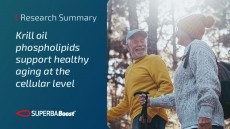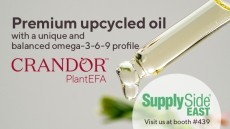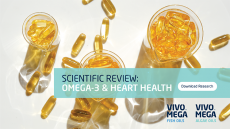Antioxidant potential of olive leaf extract improves in drought: Study
This content item was originally published on www.nutraingredients.com, a William Reed online publication.
Researchers from Italy and Portugal explored olive leaf extracts from three different Italian olive cultivars (Giarraffa, Leccino and Maurino), both exposed and not exposed to drought stress.
Findings indicated that olive leaf extracts subjected to water deficit stress were demonstrated antioxidant activity on human umbilical vein endothelial cells (HUVECs), protecting against oxidative damage.
“The antioxidant activity of extracts obtained from plants subjected to water stress on HUVEC cells is greater than that of extracts obtained from control plants, encouraging us to continue studies on OLEs subjected to water deficit,” the researchers wrote in the Journal Antioxidants.
Olive leaf extract
Olive trees (Olea europaea L.), widely cultivated for olive oil production, generate large quantities of by-products, including leaves and their polyphenol-rich extracts (OLEs), which are often discarded; for every liter of olive oil produced, about 6 kg of leaves are discarded and are usually burned or ground and spread on the fields.
The researchers noted that polyphenols are the main antioxidant molecules in plants, plants typically increase their polyphenol content when exposed to drought stress.
“As drought will be one of the major challenges in the Mediterranean region, research on cultivar-specific antioxidant properties under controlled or stressful conditions may be useful to identify which cultivars have the highest antioxidant content and potential health benefits, thus turning olive leaves from agricultural waste into a health or pharmaceutical product,” the study noted.
However, the phenolic profile of OLEs can vary dependant on the origin and variety of the plant material.
OLE properties
Leaves were collected from 18-month-old olive trees. Briefly, for each cultivar, 10 plants were completely water deprived for four weeks (OLE-GS, OLE-LS and OLE-MS for the Giarraffa, Leccino and Maurino water deficit stress groups, respectively), and 10 plants were fully watered (OLE-G, OLE-L and OLE-M for the Giarraffa, Leccino and Maurino control groups, respectively).
For each experimental group, a pool of leaves was sampled at week one (t1), week two (t2), week three (t3) and week four (t4), corresponding to the start of withholding watering and the first, second, third and fourth weeks of water deprivation.
Leaves were collected, and the extract was studied in terms of antioxidant properties and profile, intestinal permeation and protection against oxidative stress of HUVECs, as HUVECs are considered a valid model to study a wide range of diseases.
Results showed that as the drought stress progressed, the antioxidant capacity increased in all cultivars; OLE-GS, OLE-LS and OLE-MS were significantly different from their respective controls at t4.
Polyphenol content also increased after four weeks of drought stress, when all the stressed groups differed significantly from their respective control.
The polyphenol content in OLE-GS had already increased by t2 (39.4 mg GAE (100 g)−1), but the highest value was reached at t4 (52.2 mg GAE (100 g)−1).
Despite the different antioxidant capacities, the polyphenol content in OLE-GS, OLE-LS and OLE-MS was very similar at t4 (51.3, 49.9, 50.3 mg GAE (100 g)−1, respectively).
As the strongest antioxidant capacity and polyphenol content increases were observed after four weeks of stress, extracts were selected from all cultivars at t4 for ultra-high-performance liquid chromatography (UHPLC) characterization and analysis on human cells.
All tested extracts exposed to a water deficit protected HUVECs against oxidative stress by reducing ROS production, and this effect was more pronounced in OLEs from Giarraffa and Maurino exposed to drought stress compared to all other extracts.
Finally, OLE from the stressed Giarraffa group showed a higher apparent permeability of antioxidant molecules than that of Maurino.
“All OLEs tested, in particular, the OLEs from Giarraffa and Maurino subjected to water deficit stress, were able to reduce ROS production compared to untreated cells,” the researchers reported. “Considering that these extracts had a higher antioxidant activity and polyphenol content than the others, these differences could be related to a synergic effect between the present antioxidant compounds.”
The protective effect of the OLEs could be related to a determined concentration and combination of antioxidants present in the extract, they concluded.
Journal: Antioxidants
doi: 10.3390/antiox13010077
"Olive Leaf Extracts from Three Italian Olive Cultivars Exposed to Drought Stress Differentially Protect Cells against Oxidative Stress.”
Authors: Luca Cerri et al.












